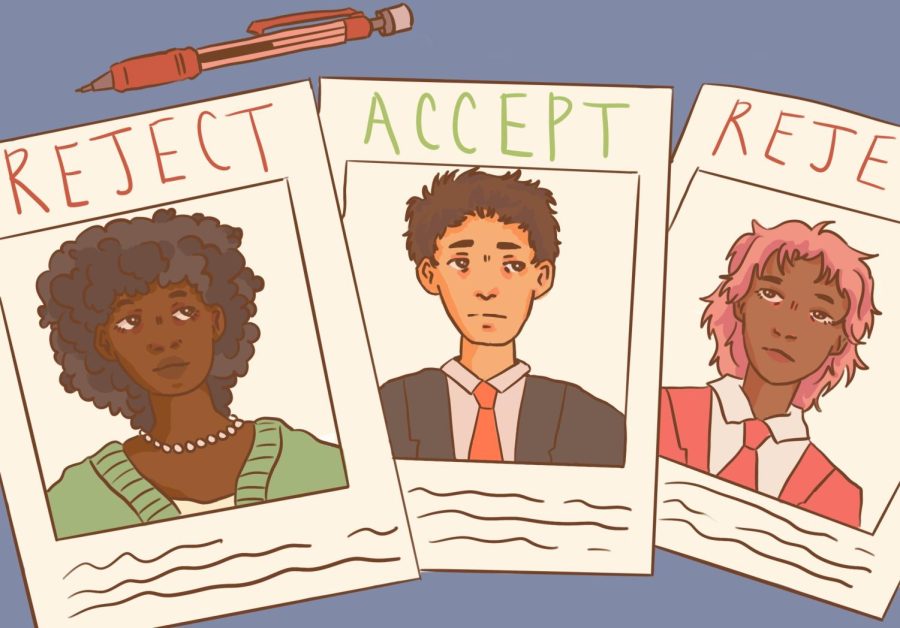Professionalism doesn’t have a ‘look’
Assistant Opinion Editor Lila Shields writes that appearance should not play a large factor in the hiring process.
April 5, 2023
Walking into job interviews is stressful enough on its own, but the anxiety level only increases when one’s appearance doesn’t align with what is considered to be “professional.” The visual expectations of professionalism remain outdated and discriminatory. Piercings, dyed hair, afros and tattoos are all unallowed in many work environments. This standard not only strips one’s individuality, but it also carries out microaggressions.
Oxford Languages, an English dictionary, defines professionalism as “the competence or skill expected of a professional.” This definition leaves out the mention of appearance, yet this idea has changed as appearance becomes a huge part of being considered for a job.
When it comes to finding a suitable candidate for a job, the only thing an employer should focus on is the capability and work ethic of an employee. Yet, 54% of people feel like they have lost career opportunities due to appearance according to The Ladder, an American news source with career statistics.
Microaggressions can be caused by stereotypes and categorizing groups of people, stripping them of individuality. Though these judgements can be unconscious, employers play a key role in eliminating this aspect in the hiring process. This can be done through education and confronting aggressions one might have. A common microaggression in the workplace is its grooming policies. This policy sets standards on how to appear professional, oftentimes carrying out closed minded rules such as ‘tamed hair’—disregarding textured hair types.
The Prohibited Employment Policies/Practices, founded by the U.S. Equal Employment Opportunity Commision, is in place to protect the rights of workers and stand against discrimination, yet that certainly doesn’t prevent bias in the process. Bias can be prevented by blind applications, a process in which people apply online and don’t disclose any information regarding physical identification.
Built In, a source for job information, provides information regarding how diversity in the workplace is preferred by 80% of employees. Disregarding appearance can create a more diverse work environment and leads to around 33% increased national profitability. It also assures someone is being hired due to their ability to perform a job well, not the way one looks.
Preventing workplace discrimination and bias has a lot of gray areas, yet there are ways to improve as both an employer and as a person. This can be done by not assuming based on physical appearance, speaking out about bias, monitoring behaviors and correcting discrimination as well as acknowledging mistakes. Blind interviews and collaborating with other employers throughout the hiring process can also eliminate further stereotyping.
Regardless if you have shaved hair or a head full of curls, it is only fair to level the playing field in the hiring process by not judging individuals based on their features. Employers have a duty to find the right fit for a position, not categorize and label a person based on their looks. Doing so not only deprives a perfectly capable employee from a job, but also contributes to stereotypes and microaggressions.











